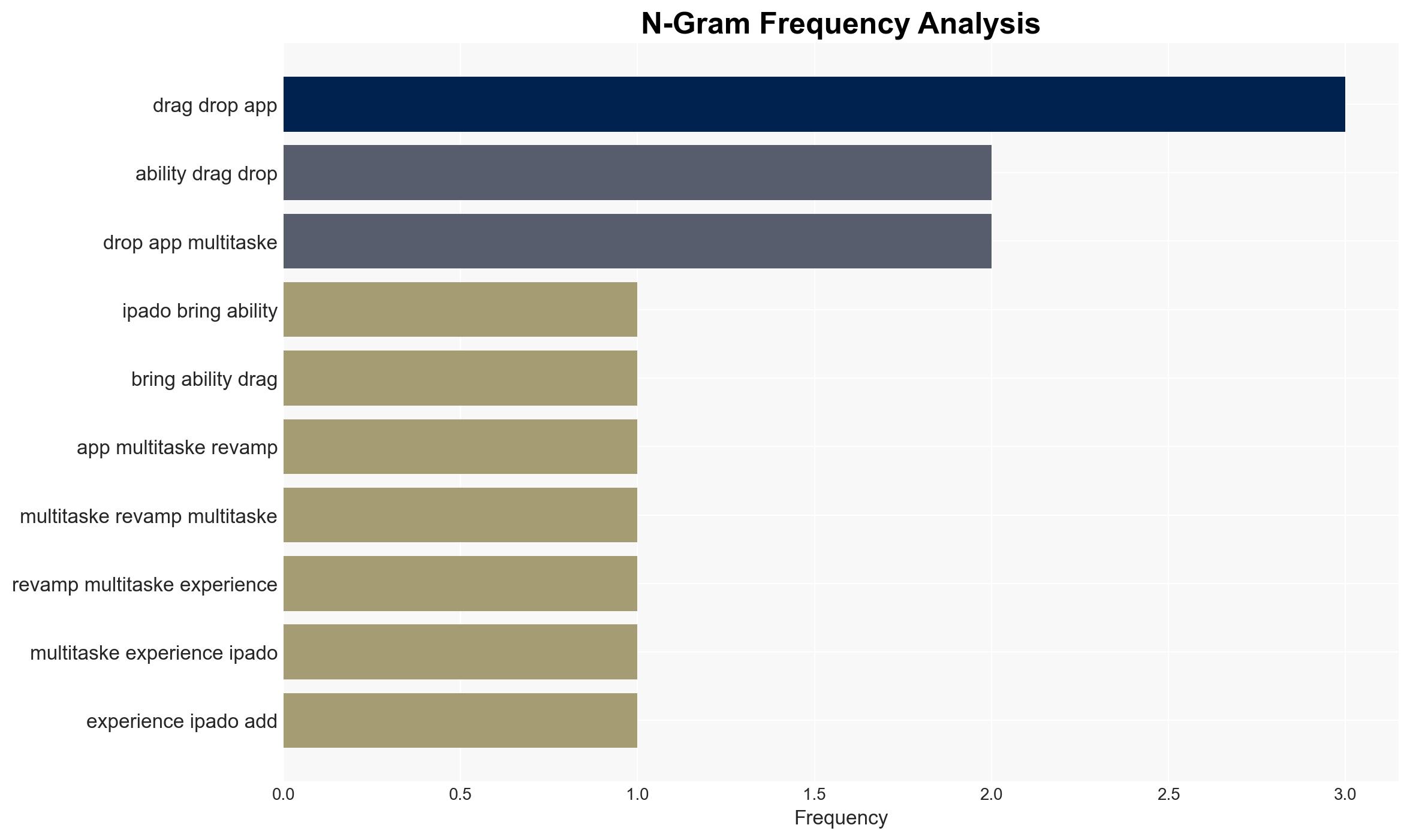iPadOS 262 To Bring Back The Ability To Drag And Drop Apps For Multitasking – BGR
Published on: 2025-11-18
AI-powered OSINT brief from verified open sources. Automated NLP signal extraction with human verification. See our Methodology and Why WorldWideWatchers.
Intelligence Report:
1. BLUF (Bottom Line Up Front)
With a moderate confidence level, the most supported hypothesis is that Apple’s reintroduction of the drag-and-drop multitasking feature in iPadOS 26.2 is a strategic move to enhance user experience and align iPadOS more closely with macOS, potentially increasing user retention and satisfaction. Recommended action includes monitoring user feedback post-release to assess the feature’s impact and potential security vulnerabilities.
2. Competing Hypotheses
Hypothesis 1: Apple is reintroducing the drag-and-drop feature to improve user experience and align iPadOS with macOS, thereby increasing user satisfaction and retention.
Hypothesis 2: The reintroduction is primarily a response to competitive pressures from other tablet manufacturers, aiming to retain market share by offering enhanced multitasking capabilities.
Hypothesis 1 is more likely due to Apple’s historical focus on user experience and ecosystem integration. The feature aligns with Apple’s broader strategy of creating a seamless experience across its devices.
3. Key Assumptions and Red Flags
Assumptions: It is assumed that the reintroduction of the feature will be well-received by users and that it will function as intended without significant technical issues.
Red Flags: Potential red flags include the possibility of technical glitches in the new feature, user dissatisfaction if the feature does not meet expectations, and potential security vulnerabilities introduced by the new multitasking capabilities.
4. Implications and Strategic Risks
The reintroduction of the drag-and-drop feature could set a precedent for further integration between iPadOS and macOS, potentially leading to increased user loyalty. However, if the feature introduces security vulnerabilities, it could lead to reputational damage and user attrition. Additionally, failure to meet user expectations could result in negative feedback and decreased market competitiveness.
5. Recommendations and Outlook
- Monitor user feedback and technical performance post-release to quickly address any issues.
- Conduct thorough security assessments to identify and mitigate potential vulnerabilities.
- Best-case scenario: The feature is well-received, leading to increased user satisfaction and retention.
- Worst-case scenario: Technical issues or security vulnerabilities lead to user dissatisfaction and reputational damage.
- Most-likely scenario: The feature is moderately successful, with some technical adjustments needed post-launch.
6. Key Individuals and Entities
Apple Inc. is the primary entity involved in the development and release of iPadOS 26.2.
7. Thematic Tags
Cybersecurity, User Experience, Market Strategy, Technology Integration
Structured Analytic Techniques Applied
- Adversarial Threat Simulation: Model and simulate actions of cyber adversaries to anticipate vulnerabilities and improve resilience.
- Indicators Development: Detect and monitor behavioral or technical anomalies across systems for early threat detection.
- Bayesian Scenario Modeling: Quantify uncertainty and predict cyberattack pathways using probabilistic inference.
Explore more:
Cybersecurity Briefs ·
Daily Summary ·
Support us





